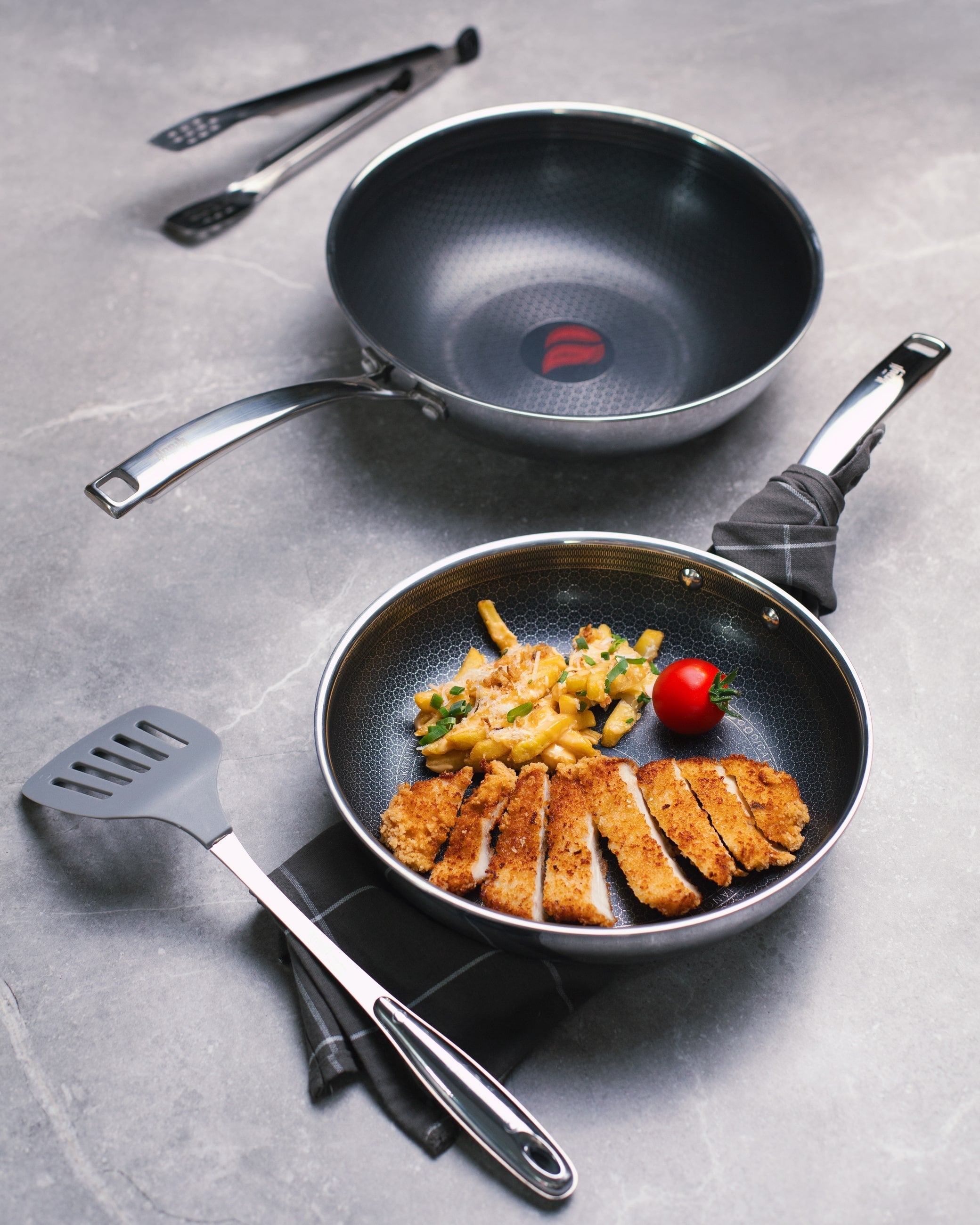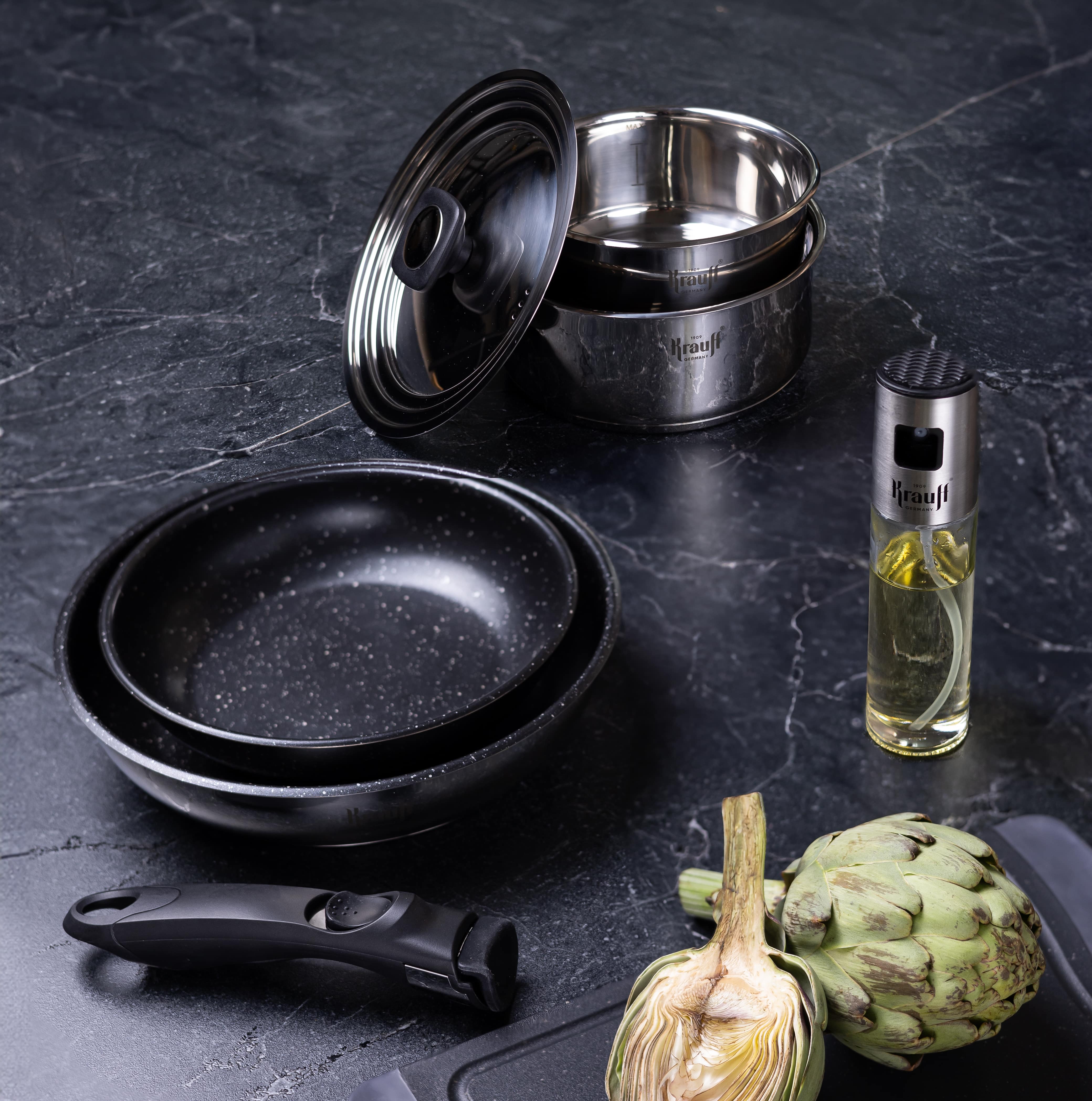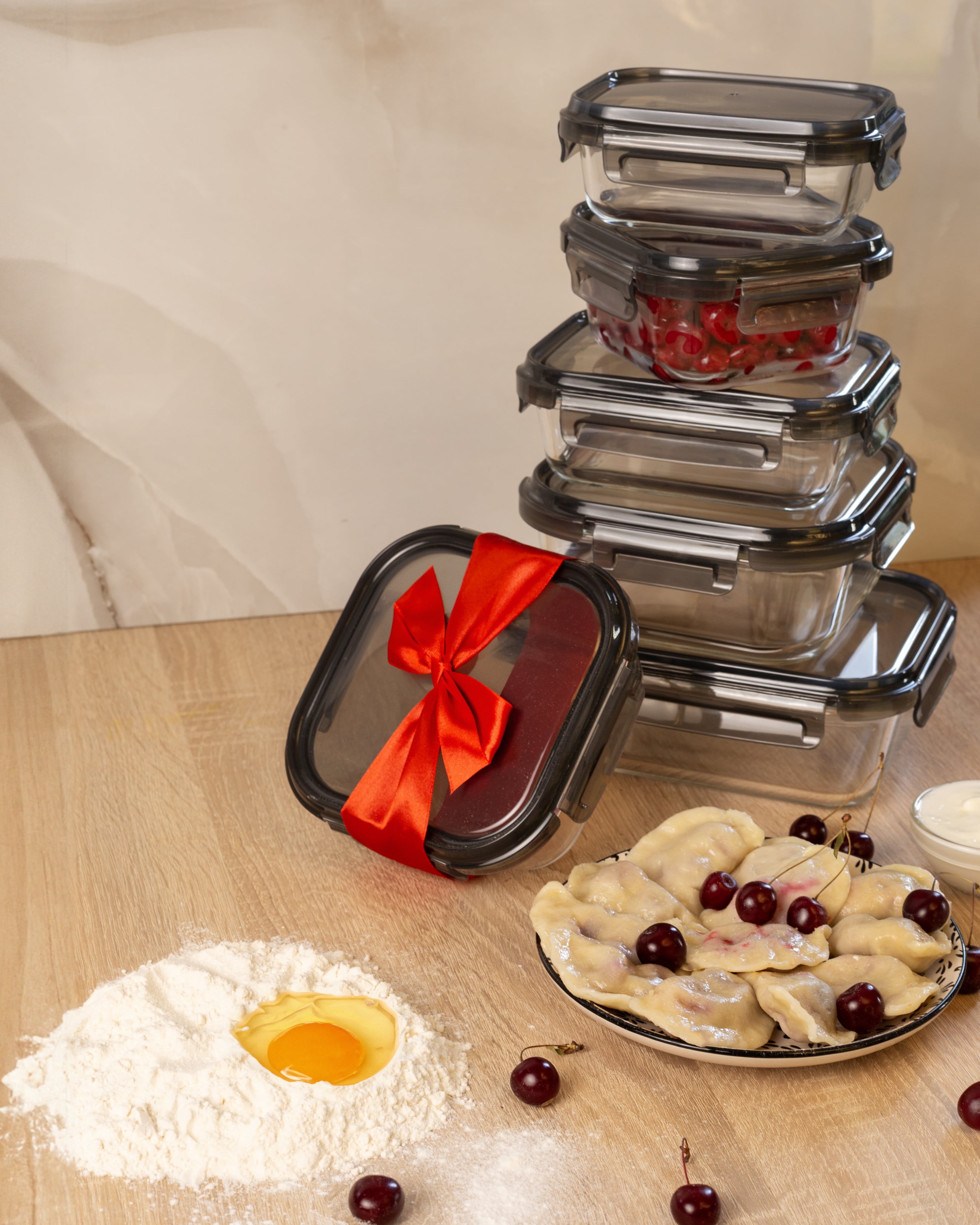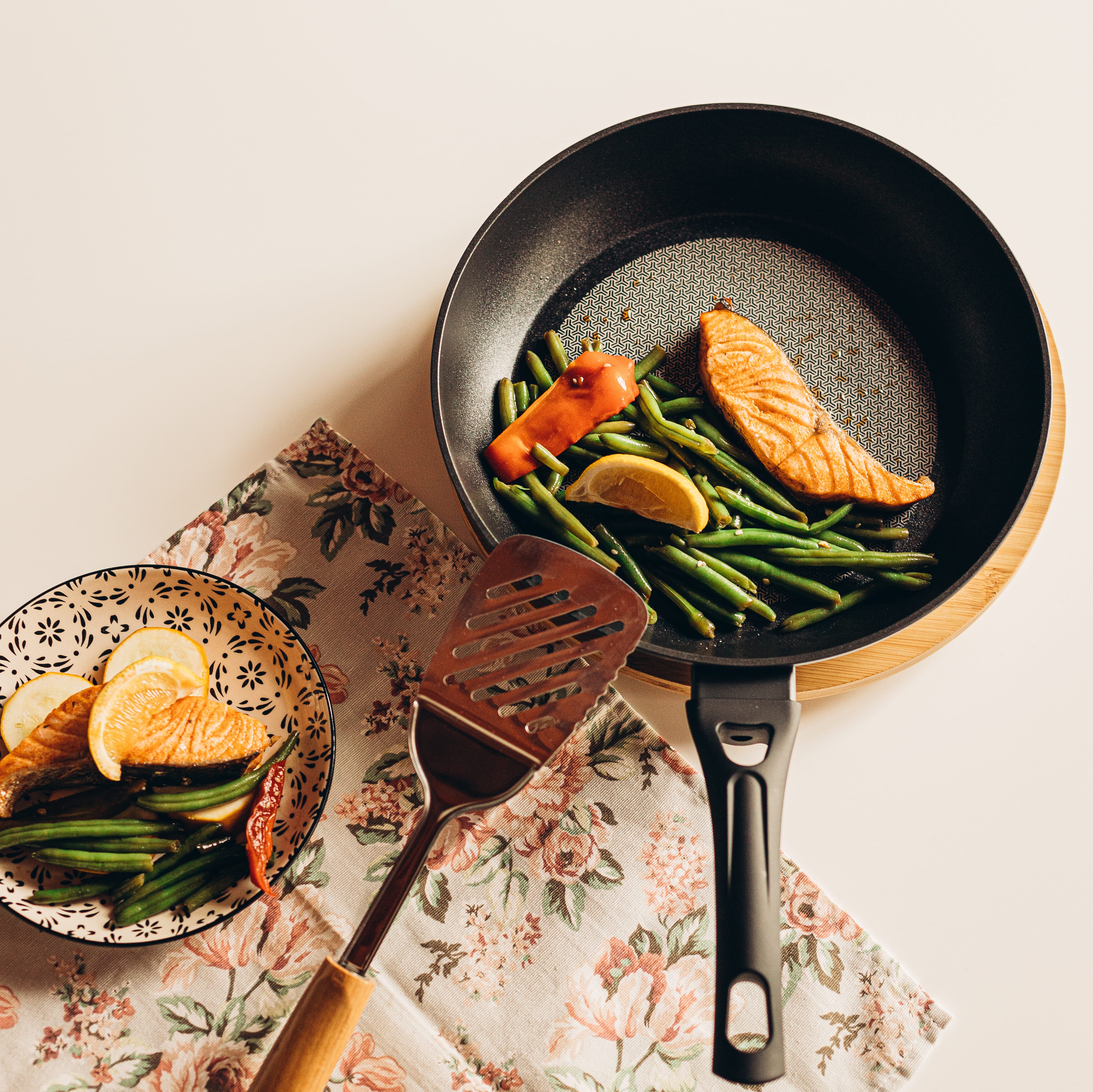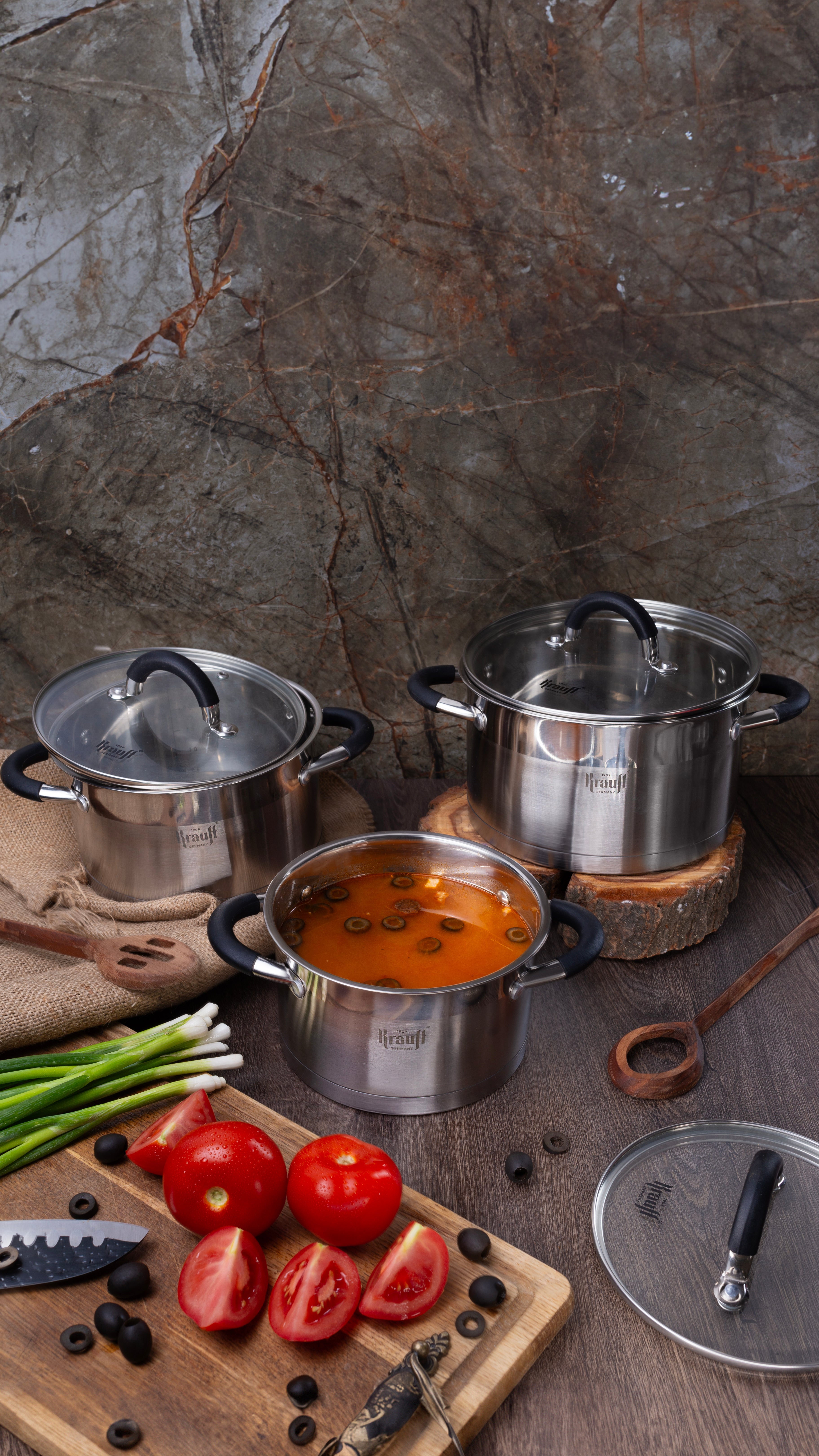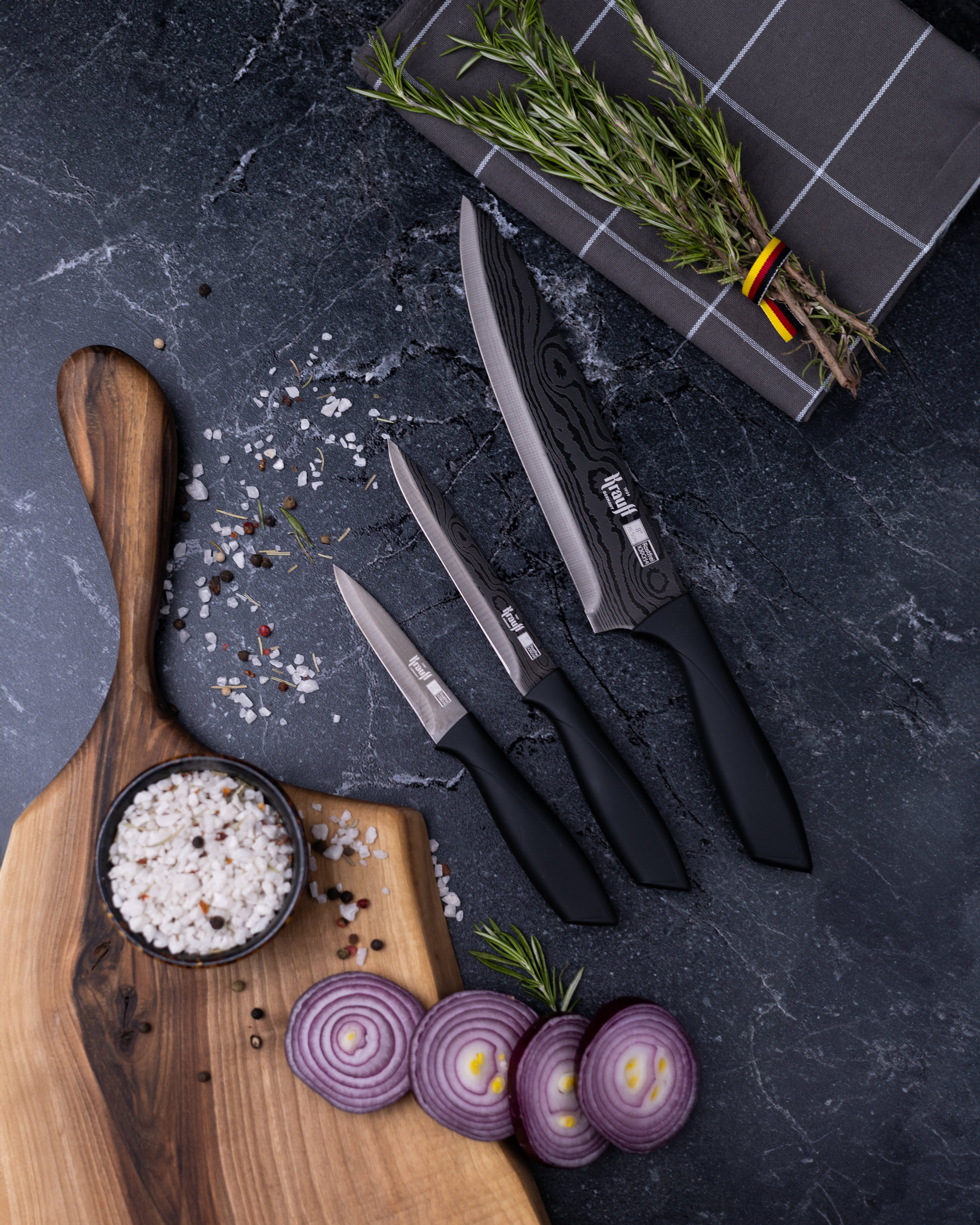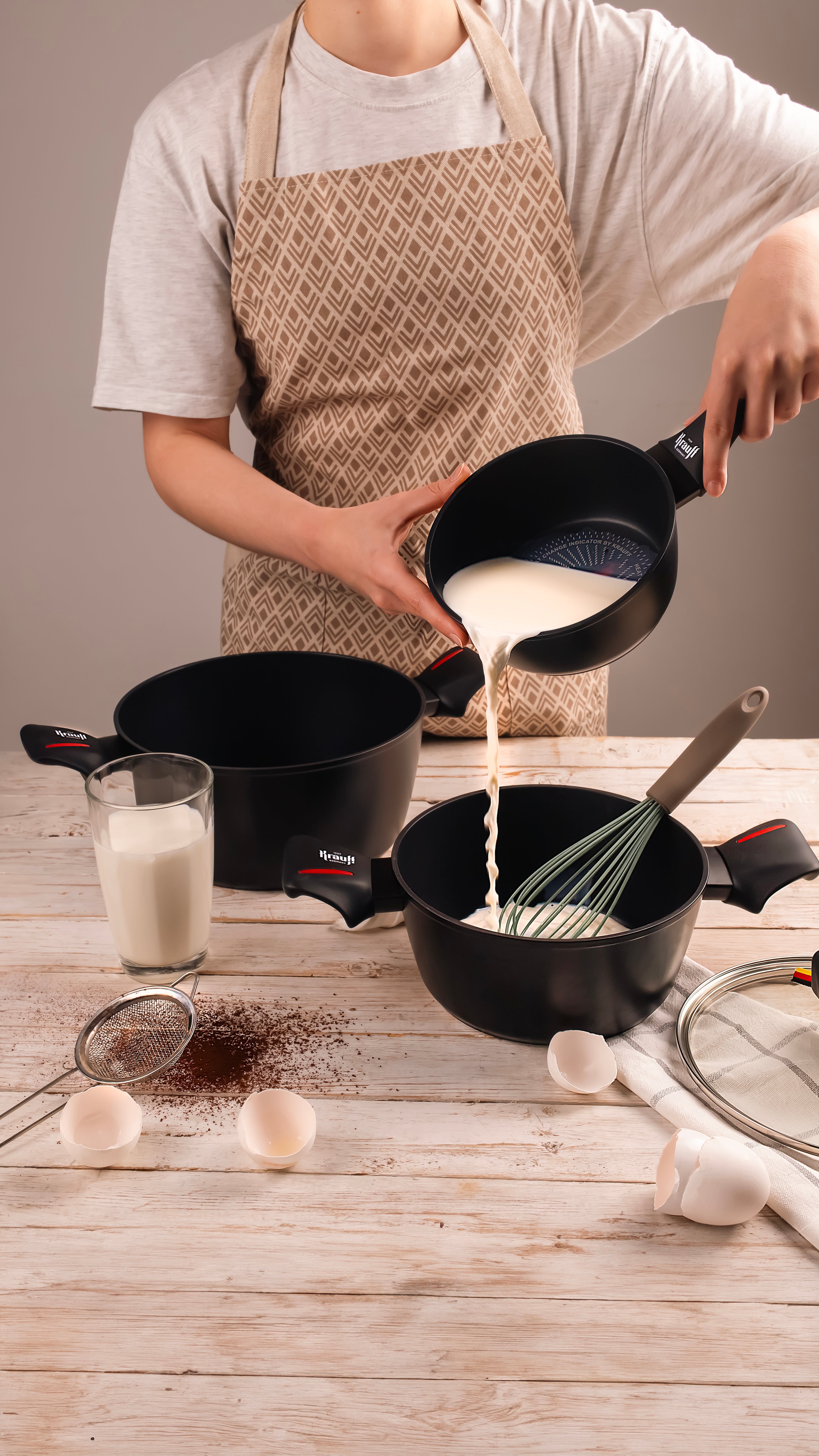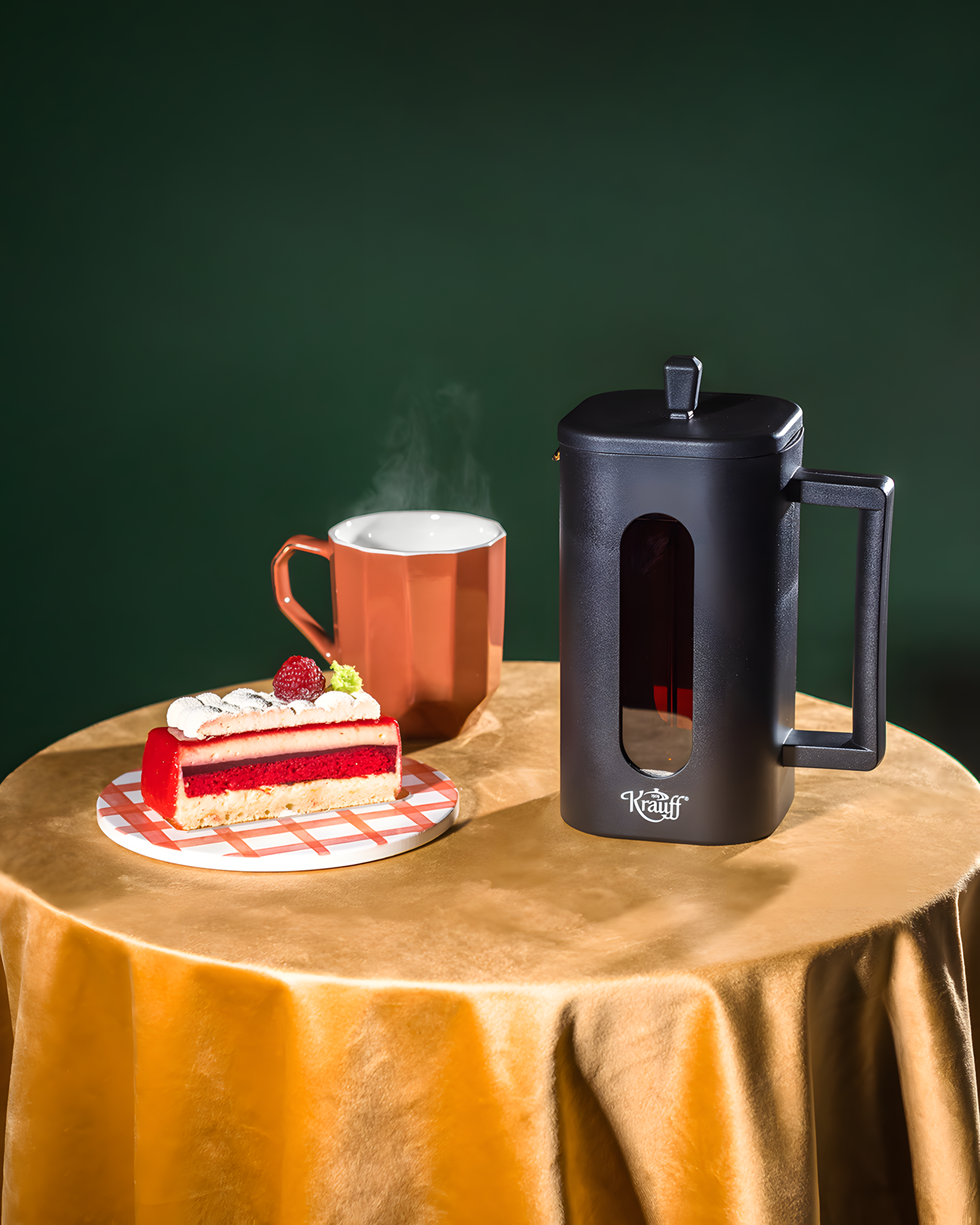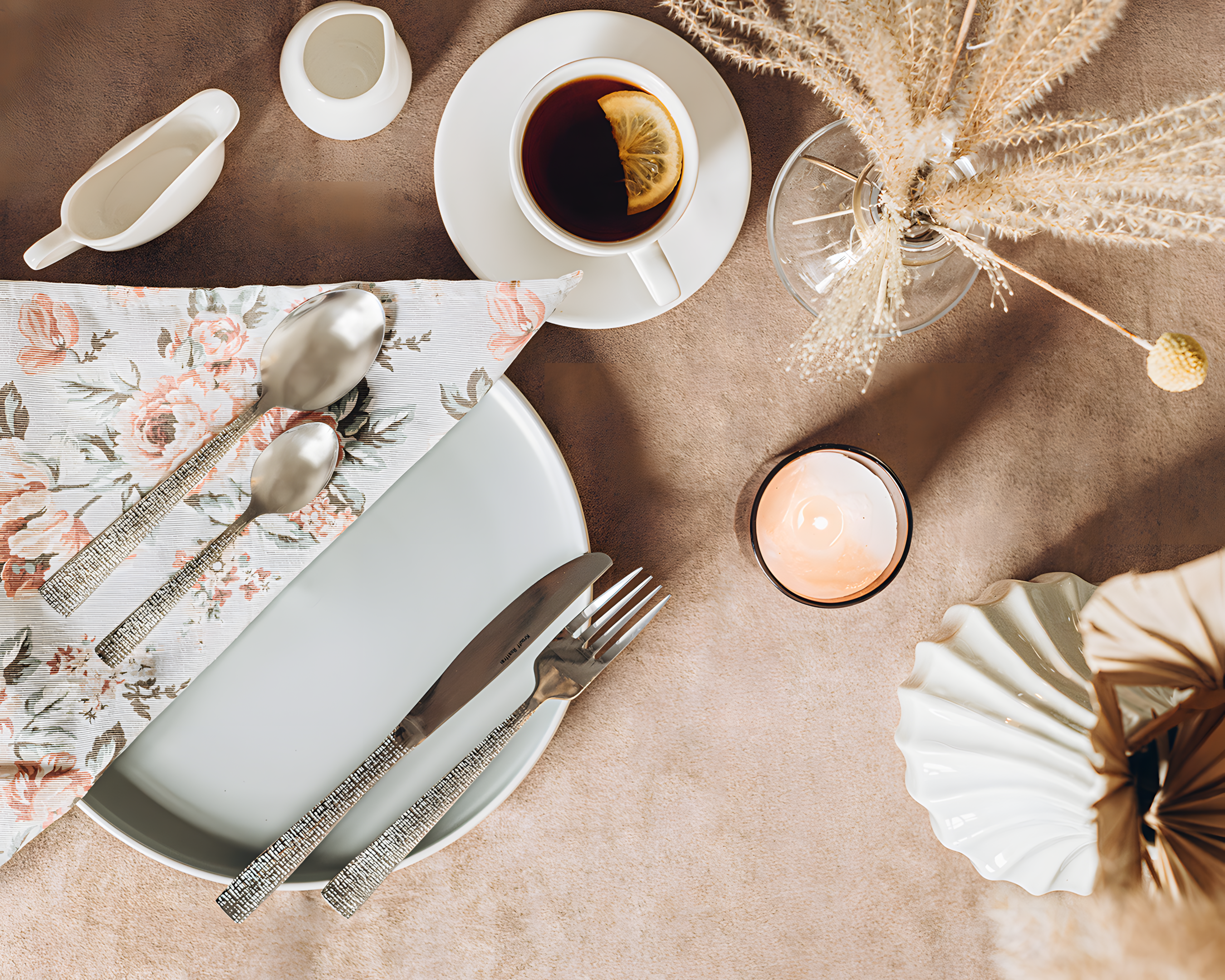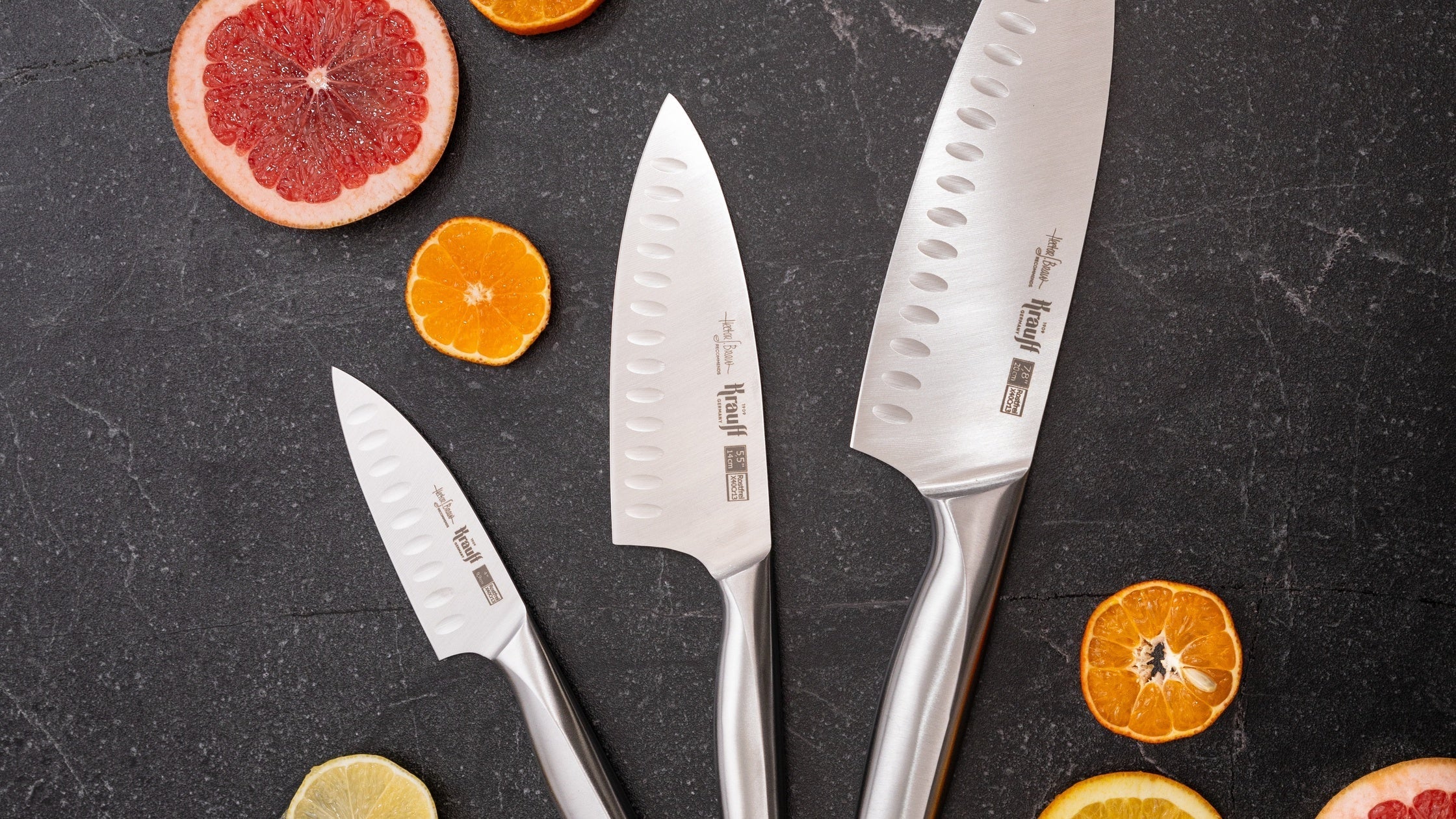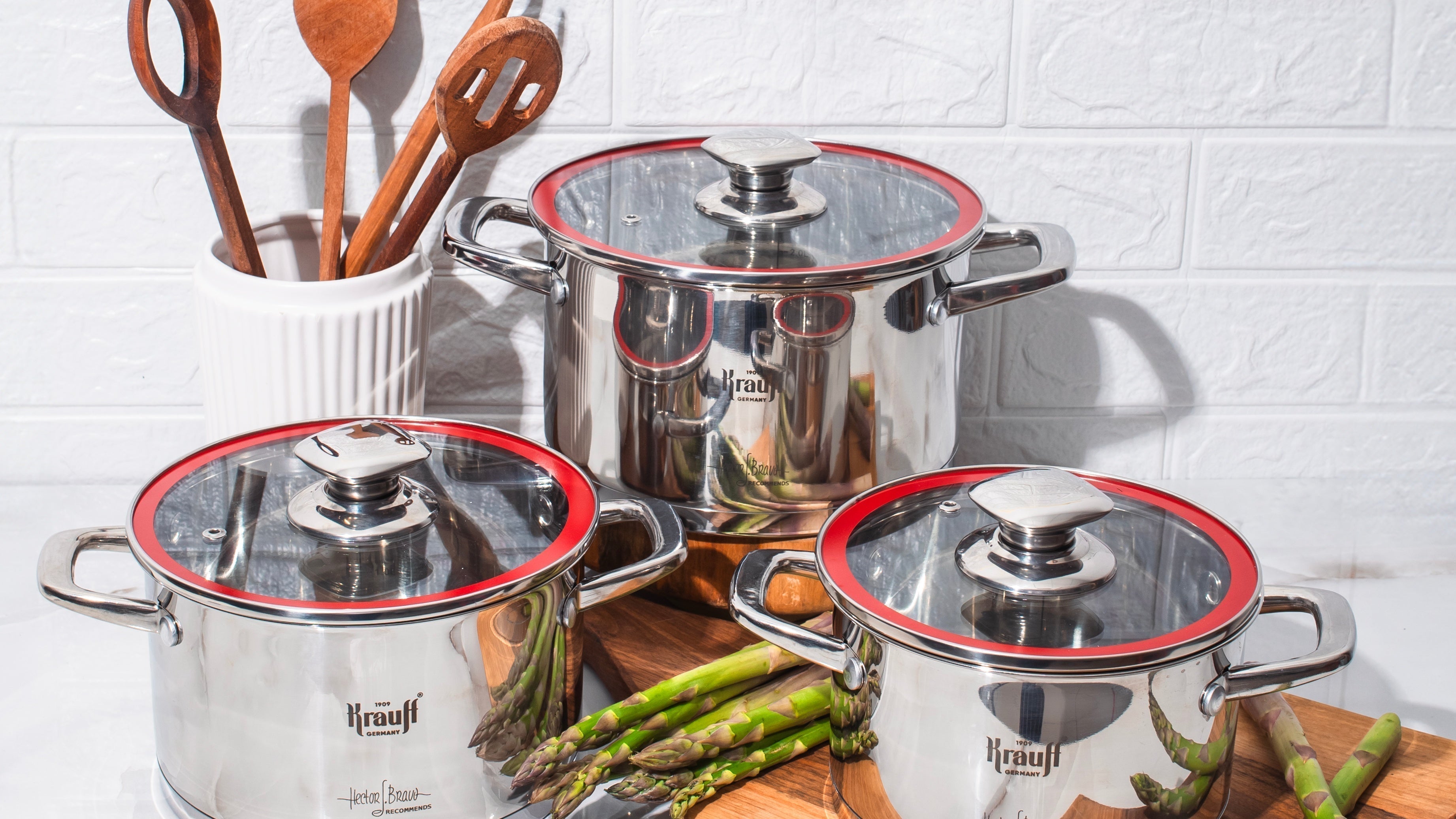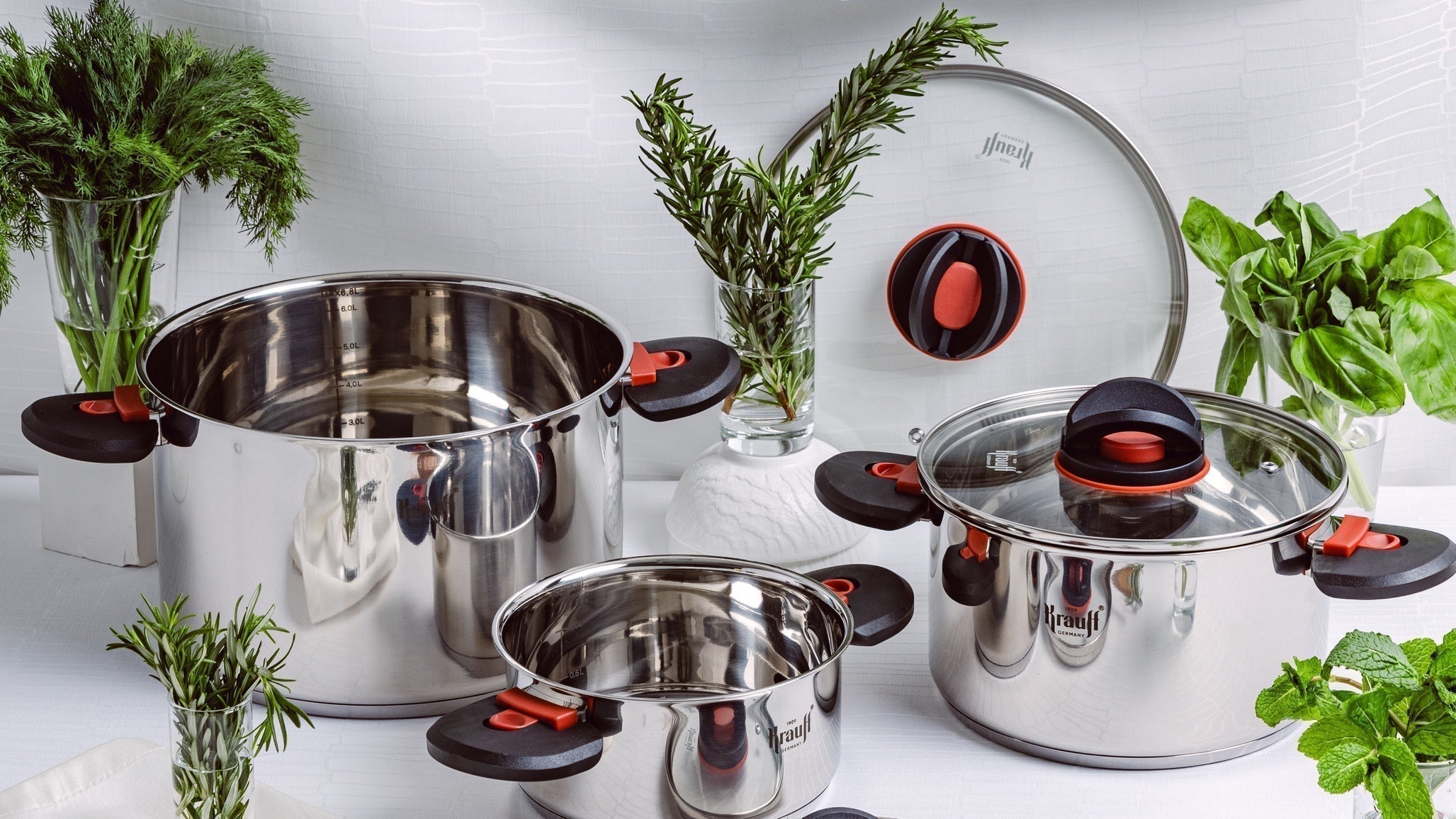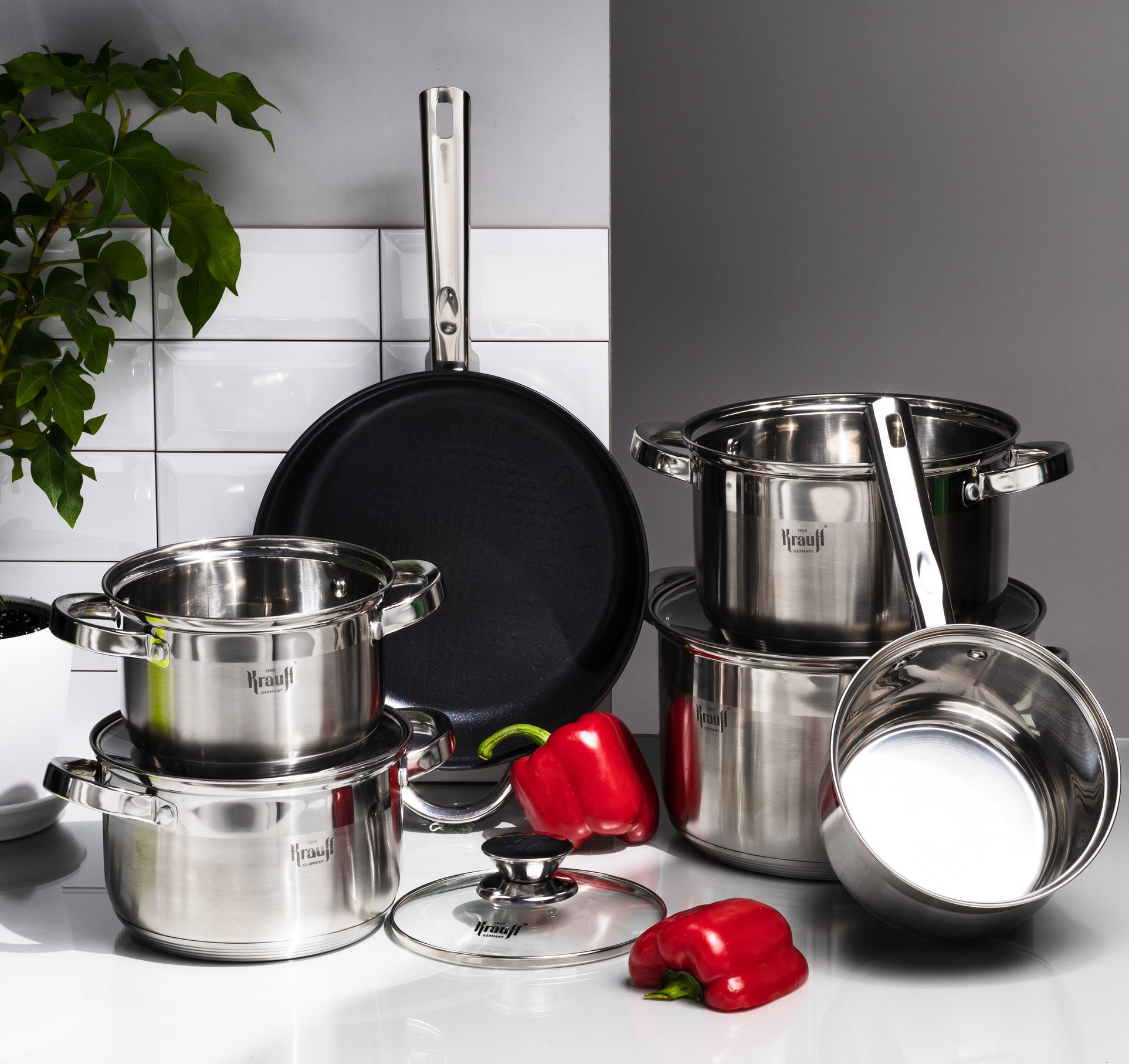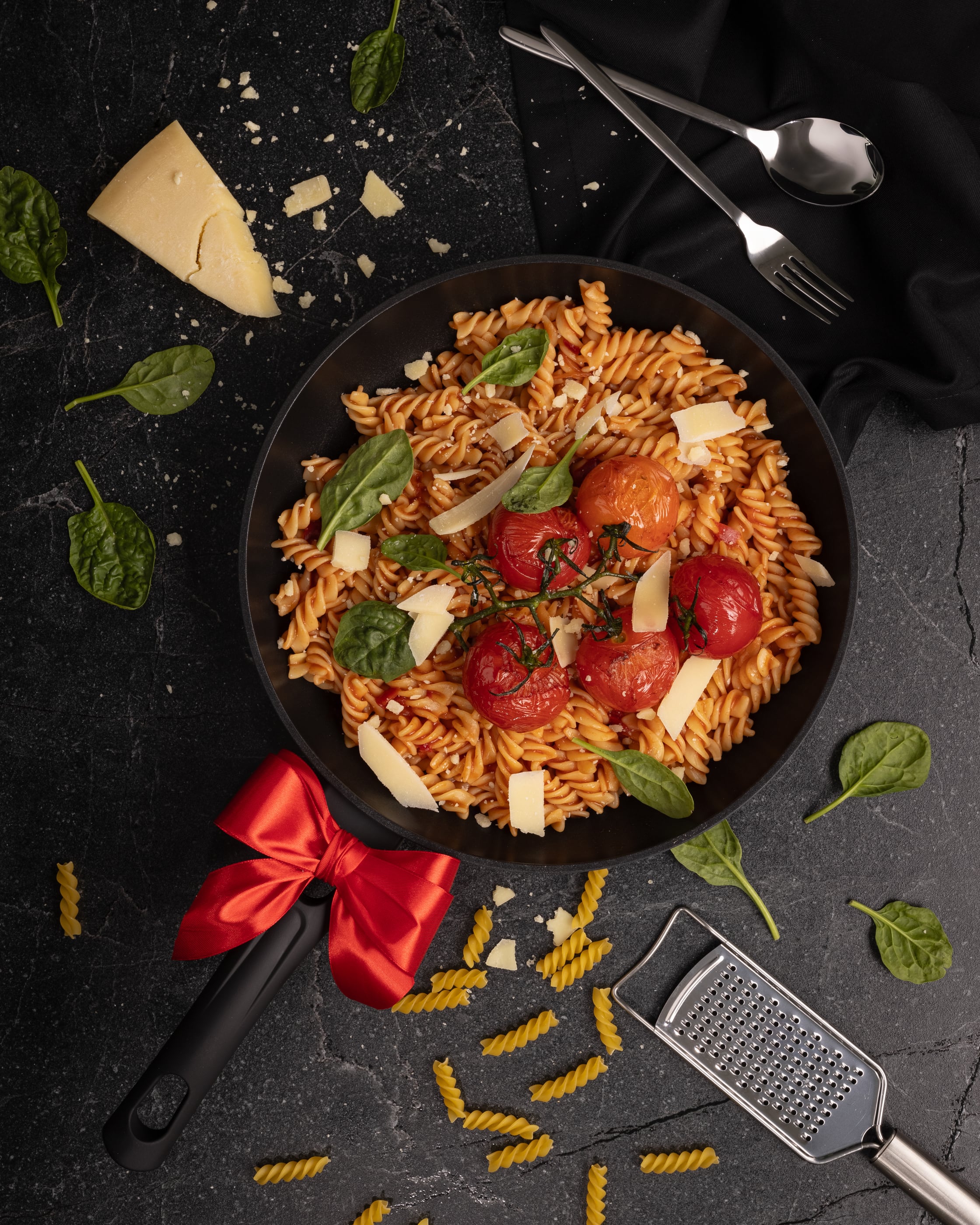
What is the difference between stainless steel, aluminum and enamel pans?
Stainless steel: a classic for everyday cooking
Stainless steel pans are, without exaggeration, a modern classic. This is the type of cookware most often chosen for daily use at home, and there are good reasons for this. Stainless steel is a strong, durable and safe material that does not chemically react with foods, does not change their taste and does not absorb odors.
Advantages:
-
Durability : Stainless steel pans are resistant to scratches, impacts and corrosion. They retain their appearance for years, even with intensive use.
-
Safety . Steel does not emit harmful substances into food, it is suitable for cooking any dishes - from soups to sauces.
-
Compatibility with different stoves . Such pans work on gas, electric, glass-ceramic stoves, as well as on induction (provided there is a special magnetic bottom).
-
Easy care . The surface is easy to clean, does not absorb odors and grease. The dishes can be cleaned with soft abrasives without fear of damaging the coating.
Disadvantages :
-
Slow heating . Compared to aluminum, steel heats up more slowly. To compensate for this, it is worth choosing models with a multi-layered bottom.
When to choose:
-
If you cook every day and value reliability.
-
If versatility is important to you, one such pan can be used for cooking, stewing, blanching, and heating.
If you are looking for a long-term solution and are willing to pay a little extra for quality.
Tip: pay attention to the thickness of the bottom (the thicker it is, the better the heat is distributed) and the presence of a capsule or multi-layer bottom - it ensures uniform heating and reduces the risk of burning.

Aluminum pans: light, fast, but delicate
Aluminum pans are the choice for those who value speed of heating and ease of use. Thanks to its high thermal conductivity, aluminum allows you to quickly boil water or cook a dish in minimal time. Such pans are especially convenient for everyday, simple tasks in the kitchen.
Advantages:
-
Lightness . Even large aluminum pans weigh very little, which makes them convenient for daily use.
-
Fast heating. Aluminum is one of the best heat conductors among the materials used in cookware. Food is cooked faster, saving energy.
-
Affordable price. In most cases, aluminum pans are cheaper than steel or enameled ones.
Disadvantages:
-
Tendency to deform. Aluminum is a soft metal, so the pan may lose its shape upon impact or temperature changes.
Oxidation. If the pan is made of non-anodized aluminum, it reacts with acidic foods (tomatoes, lemon), which can change the taste and color of the food. -
Unsuitable for long-term food storage. It is best to transfer food in aluminum containers immediately after cooking.
When to choose:
-
If you need a lightweight pot for boiling water, cooking vegetables or pasta.
-
For "field conditions" - cottages, camping.
-
If you are looking for a budget option for quick meals.
Tip: Choose anodized or coated aluminum pans - they are protected from oxidation, have a smoother surface and last longer. Many modern models also have a non-stick coating.

Enamel pots: aesthetics and caution
Enamel pots have long had a reputation as "household favorites." They are familiar to many since childhood - thanks to their bright colors, patterns and smooth shiny surface. But despite their external attractiveness, enameled dishes require careful treatment.
Construction: The base is usually metal (steel or cast iron), and an enamel coating is applied on top - a glass-like layer that protects the metal from contact with food and gives it an aesthetic appearance.
Advantages:
-
Safety and neutrality. Enamel does not enter into a chemical reaction with products - you can even cook sour dishes (borscht, fruit compotes, sauces).
-
Does not absorb odors. The smooth glassy coating is easy to clean and does not retain odors.
-
Visual appeal. Enamelware often has a decorative appearance and can be used not only for cooking, but also for serving.
-
Well suited for dairy and delicate dishes.
Disadvantages:
-
Fragility. Enamel can crack or chip if hit hard or dropped. This not only makes the cookware look bad, but also makes it unsafe.
-
It does not tolerate overheating well. It is not recommended to leave an empty pan on the fire or heat it without liquid.
-
Not all models are compatible with induction hobs. Although there are exceptions - it all depends on the base material.
When to choose:
-
If you value the atmosphere and beauty of presentation, you want to use the dishes not only on the stove, but also on the table.
-
If you care about the aesthetics of your kitchen and don't mind being a little more careful with your dishes.
Tip: when choosing an enamel pan, carefully check the coating - it should not have cracks, stains or chips.

Comparison table: steel vs aluminum vs enamel
After reviewing each material in detail, it's time to compare them - based on the key characteristics that most often influence your choice. All types have their advantages and limitations, so it's worth focusing on your cooking habits, lifestyle, and care requirements.
|
Characteristic |
Stainless steel |
Aluminum |
Enamel |
|
Thermal conductivity |
Medium |
High |
Low |
|
Heating rate |
Slower |
Very fast |
Slow |
|
Strength |
High |
Low (may deform) |
Medium (fragile to blows) |
|
Neutrality to taste |
Yes |
No (without coating it oxidizes) |
Yes |
|
Food safety |
Yes |
Depends on the coverage |
Yes (with full coverage) |
|
Weight |
Medium |
Easy |
Medium to heavy (depends on the base) |
|
Compatibility with stoves |
All types (induction with magnetic bottom) |
Not always induction compatible |
Not always induction compatible |
|
Average service life |
10+ years |
3-7 years |
5-10 years (with careful care) |
What to look for when choosing a pan
Material is only part of the choice. To make the pan truly comfortable in everyday use, it is important to consider several other parameters: from the thickness of the bottom to the type of handles. All of this directly affects comfort, durability, and even cooking safety.
Bottom and wall thickness
The thicker the bottom, the better the heat is distributed over the surface, which reduces the risk of burning. A multi-layered bottom (often with an aluminum or copper core) provides even heating and a stable temperature. The walls should also be sufficiently dense - this is an indicator of quality.
Multilayer structure
Modern pans often use a so-called "sandwich bottom", which consists of several layers of metal. This design combines the advantages of different materials - for example, the thermal conductivity of aluminum and the strength of stainless steel.
Handles: shape, material, fixation
-
Pay attention to the material of the handles - stainless steel with heat-resistant pads or Bakelite.
-
It is important that the handles are conveniently located, do not slip in the hand, and do not overheat.
-
Reliable fixation (welded or riveted) is the key to safety.
Cover
The best option is a glass lid with a steam vent, which allows you to see the cooking process without having to lift it again. A tight fit provides energy efficiency and better temperature control.
Measuring scale inside
A trifle, but very convenient: it allows you to accurately dose water or broth without additional measuring containers.
Pot volume
-
For one or two people, 1.5-2 liters is enough.
-
Families of 3-4 people - 3-5 liters.
-
For large volumes (borscht, preparations) - 5+ liters.
Compatibility with your stove
Check that the pan is suitable for your type of stove (especially important for induction). The bottom must be completely flat and magnetic to work on an induction surface.
It is worth approaching the choice practically: choose not by appearance, but by what type of stove you use, and how important ease of care or design is to you. If you do not want to limit yourself, a good solution would be to have several pans made of different materials - for different tasks and moods.
The Krauff brand offers models that combine the benefits of technology with pleasant aesthetics. Quality cookware is not only about convenience, but also about the pleasure of the daily cooking process.











